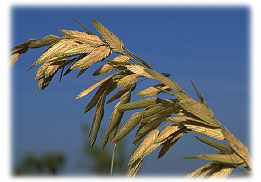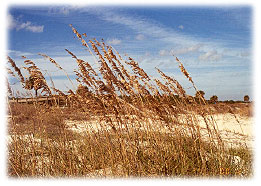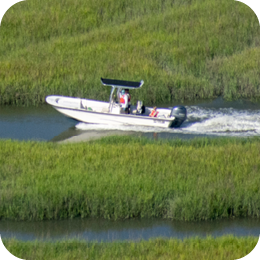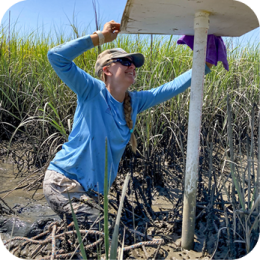 Sea oats are the most important and widespread grass on southern coastal dunes. Sea oats get their name from the large plumes produced during summer which resemble oats grown for food. This tough perennial grows to a height of 1-2 meters (3-6 feet) and may be recognized by its oat-like flowers or panicles. The seed heads mature in autumn. They are compressed spikelets borne at the end of stiff stems 1 meter (3 feet) long or more. Its pale green leaves are long and narrow, measuring less than 1/5 centimeters (0.5 inches) in width.
Sea oats are the most important and widespread grass on southern coastal dunes. Sea oats get their name from the large plumes produced during summer which resemble oats grown for food. This tough perennial grows to a height of 1-2 meters (3-6 feet) and may be recognized by its oat-like flowers or panicles. The seed heads mature in autumn. They are compressed spikelets borne at the end of stiff stems 1 meter (3 feet) long or more. Its pale green leaves are long and narrow, measuring less than 1/5 centimeters (0.5 inches) in width.
Drought resistant and immune to some fungus infections that plague other grasses, sea oats are especially hardy plants. Referred to as pioneer species, sea oats (Uniola paniculata) are very important plants along Georgia beaches because of their ability to trap wind-blown sand which in turn provides stability to sand dunes for plant colonization. Extensive root systems of the sea oats form a lattice-work that grows from the bottom of the dune stabilizing the loose sands of small and young and large and old dunes alike.
 Sand that collects around the plant stimulates plant growth. The cycle of sand collection and plant growth facilitates expansion of both the sea oats and the sand dune. If a sea oat is buried by sand, it develops vertical rhizomes (underground stems) which grow to the surface producing an offspring plant. Primary dune systems that have been cut away by hurricanes reveal original clumps of sea oats in the dune profile with underground stems (rhizomes) and roots reaching up to 9 meters (30 feet) below the top of the dune. The fibrous roots of these plants usually extend to the upper parts of the water table, some 12 meters (40 feet) below the dune’s peak in some places. The vertical taproot alone can grow up to 3.5 meters (12 feet).
Sand that collects around the plant stimulates plant growth. The cycle of sand collection and plant growth facilitates expansion of both the sea oats and the sand dune. If a sea oat is buried by sand, it develops vertical rhizomes (underground stems) which grow to the surface producing an offspring plant. Primary dune systems that have been cut away by hurricanes reveal original clumps of sea oats in the dune profile with underground stems (rhizomes) and roots reaching up to 9 meters (30 feet) below the top of the dune. The fibrous roots of these plants usually extend to the upper parts of the water table, some 12 meters (40 feet) below the dune’s peak in some places. The vertical taproot alone can grow up to 3.5 meters (12 feet).
Complementing the network of roots underground, sea oat leaves and stems trap wind-blown sand, thus increasing the size of the dunes. Dunes function as dikes against flooding from large ocean waves and as reservoirs of sand to seasonally replenish the beach. During hurricanes, sand dunes help reduce the energy of storm waves.
Above ground sea oat stems continually flex in the battering wind or under the weight of a foraging red-wing blackbird. Leaves often bend to the ground and dig shallow crescents in the sand as they rotate in the wind. These depressions then catch the seed heads that fall in the late summer and keep them from blowing away. Seedlings that have been covered by a moderate amount of sand grow more quickly than those that are left exposed. It is thought that the sheltering sand insulates the infant plant against too much heat and desiccation. However, sea oats primarily propagate new growth by underground rhizomes.
Because of their critical Importance in maintaining healthy sand dunes, sea oats are protected by law. It is illegal to pick and/or tamper with sea oats in Georgia.
GO BACK A PAGE
RETURN TO HOME








